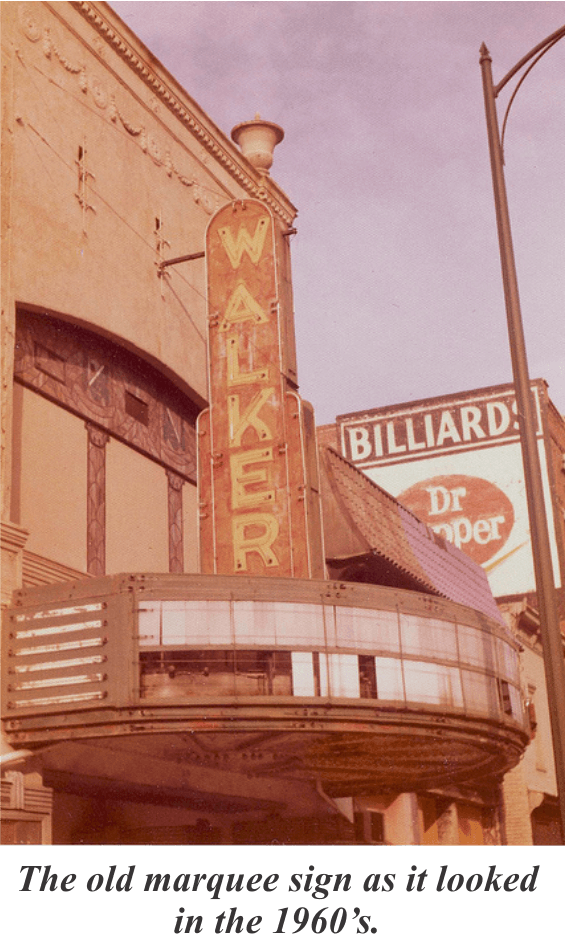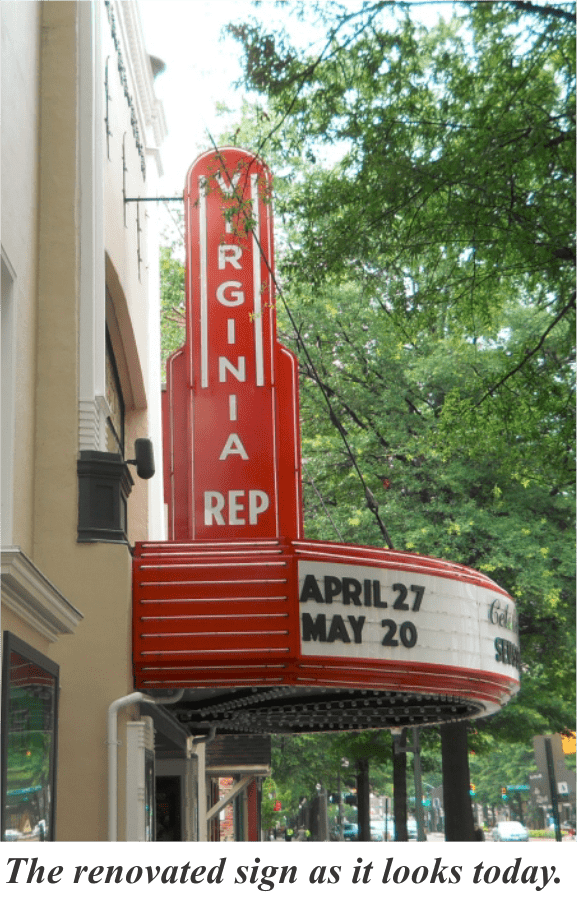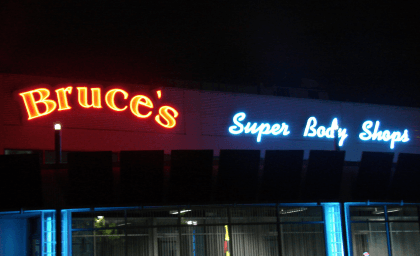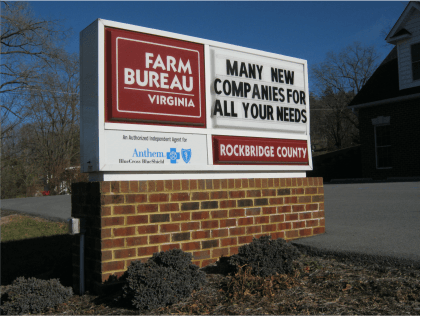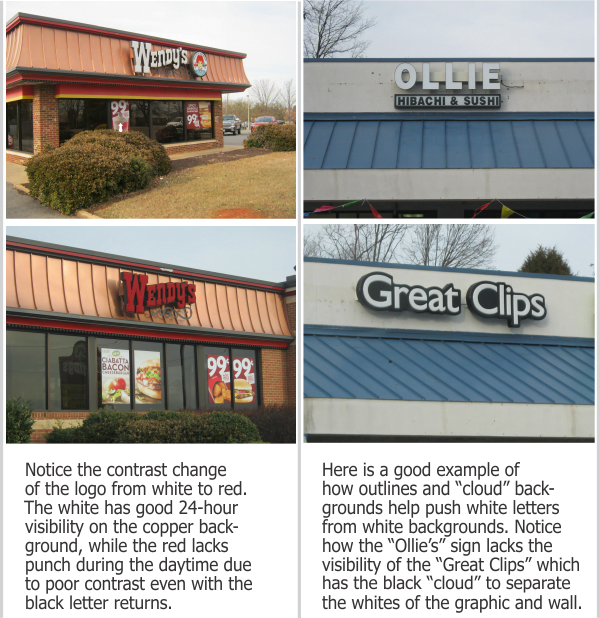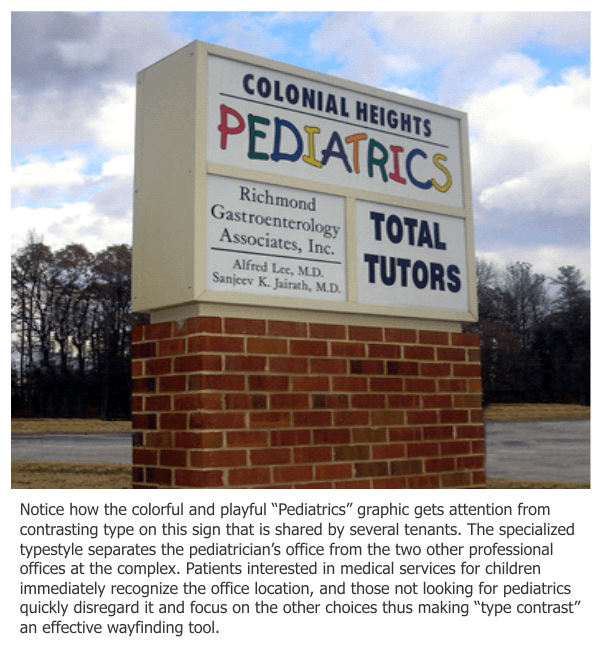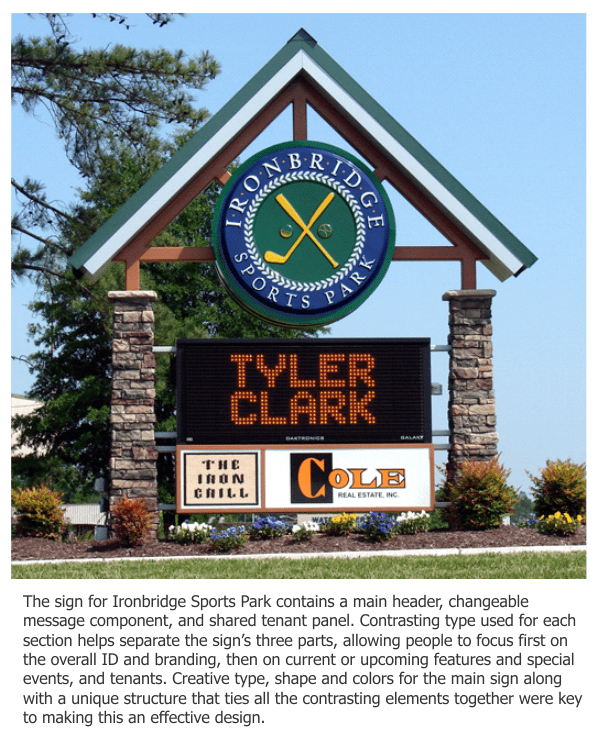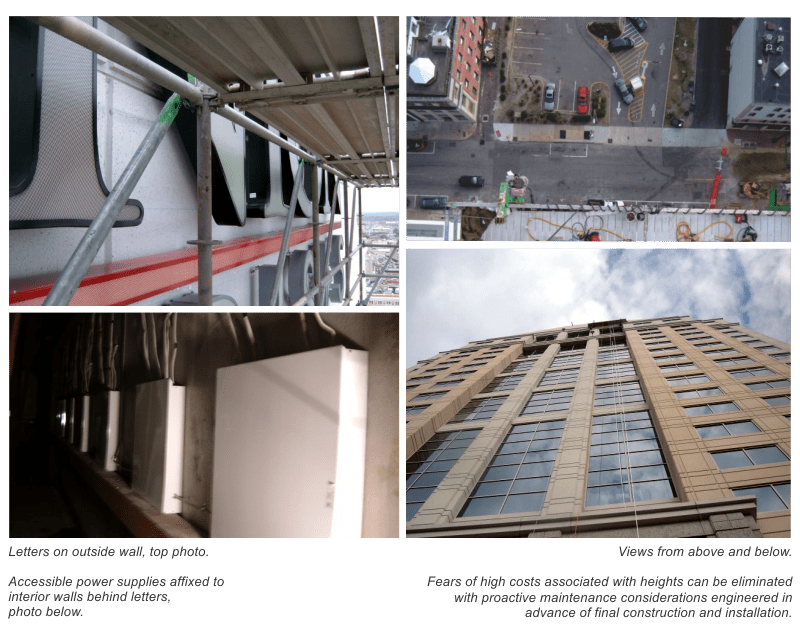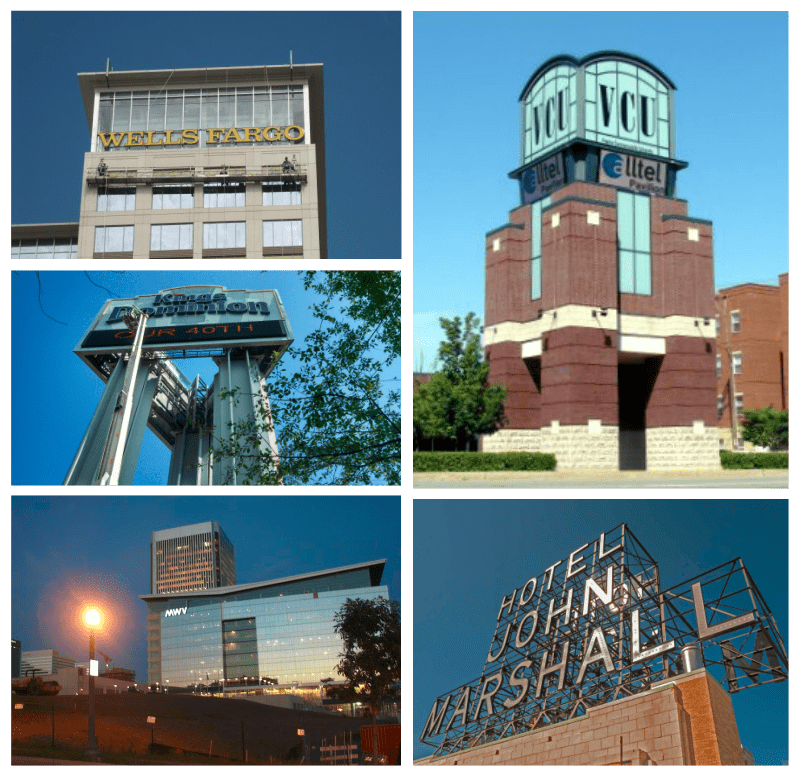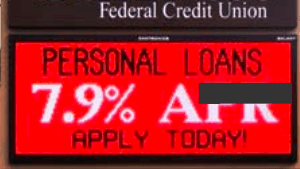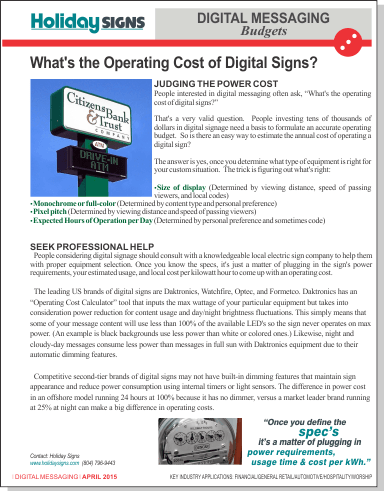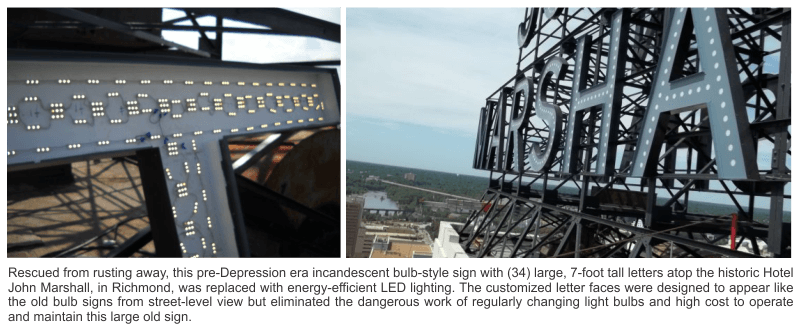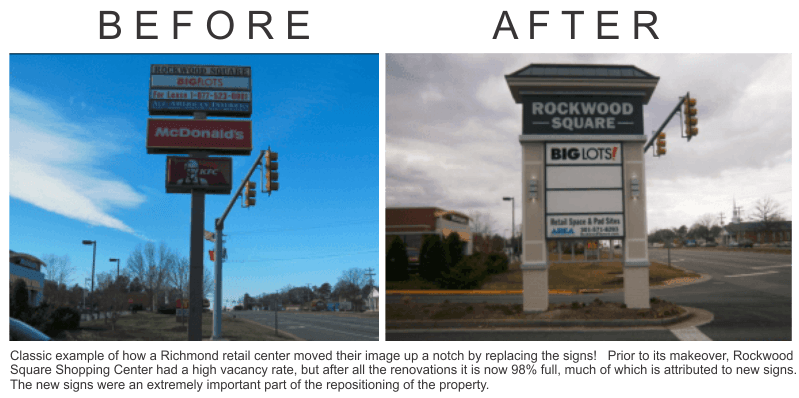Why Can’t I Read My Sign?
 WHY CAN’T I READ MY SIGN?
WHY CAN’T I READ MY SIGN?
AVOIDING “STEALTH SIGNAGE”: 5 TIPS FOR MORE READABLE SIGNS

Sign nearing “stealth” condition. Letters are small plus the contrast of the yellow and brown gets worse as the sign ages.
SIGHT OVERSIGHT
I recall an earlier time in my signage career when I made a custom sign for some residential property at Wintergreen Resort here in Central Virginia that earned the nick-name of “the stealth sign” because you just couldn’t read it. I think the background was a medium gray and the graphics were light gray. In the shop it looked great, but once it was installed out on the roadway in the sunlight, it all faded into a big gray square at a short distance.
You only make mistakes like that once if you want to hold on to your reputation as a signage professional in these parts! The Wintergreen Resort is very conscious about environmental design, but they also want signs that people can see and read. Since that time I learned to be more proactive in choosing good contrasting colors for signs. I also learned that color is only one important aspect of sign readability.
INCREASE YOUR VISIBILITY
Here are 5 sign design factors that, if considered early on, will produce readable signs every time:
1) Overall Size and Letter Height
Make sure the size is right for the viewing distance and speed of traffic. If the sign’s too small, you’ll have readability problems. Calculate letter heights with your sign project manager and beef them up above and beyond the minimums for greatest awareness. Utilize things like brick or stone or stucco bases and columns to add size and bulk to the sign monument. Add a decorative top to gain more attention. Typically these types of sign embellishments do not add to the sign area used for permitting.
If you’re not sure if the design on paper will do its job in the field, have your project manager produce a simple scaled prototype of the proposed sign shape, and even add scaled graphics, to temporarily set in place and get a good look from all directions prior to final construction.

Big Improvements to Gain Attention! The client had a simple pole sign to start with, but added a brick base and edging to beef up attention. Adding a colorful electronic message center helps draw eyeballs while interacting with prospects 24/7 (sorry I could not capture the LED-lit sign well in the photo). A decorative top also gives passers-by a reason to look.
2) Height

The ground elevation where this sign is installed falls way below the roadway elevation. Although not shown in full in the photo, tall brick columns lift the sign into the normal viewing range of passing traffic.
Consider the landscape around the sign, rate of traffic speed, and sign codes to judge how high in the air the sign should be. If terrain elevations dip below road level at the sign location, you probably need to have a high base structure to get the sign up within the prime viewing zone. Likewise if speed limits are high, elevating the sign will allow for greater visibility distances.
3) Contrast
Avoid erecting a stealth sign by making sure the background color contrasts well with the graphics. Also be cognizant of the way shadows from sunlight or spotlighting will fall on the sign, especially if you’re using dimensional letters. Shadows will make signs difficult to read if you don’t do your homework in choosing the right color contrast in the sign design phase.
4) Overall Design

This three-dimensional fish adds a creative touch to the entrance of a retail complex in Ashland. Making your sign an icon always beats “stealth” advertising!
Be creative! Wearing a boring outfit to the big party isn’t as effective as something snazzier, if you want to draw attention. Same thing with signs: eye-catching designs are what you need out on the street to gather the attention of prospective customers. Think outside the box sign!
5) Lighting/ Electronic Message Component
Remember that signs get just as much attention at night, and you can ask your sign designer to provide an extra sketch of how the sign will appear when lit if you have night-time visibility concerns. Sometimes face lighting and internal lighting can be combined for the best effect. Many times special sign materials can be used that are one color in daylight, and another at night. Adding an electronic message center to your sign can buy more attention both day and night due to the motion of changeable messages and interesting, eye-catching colors and designs.

Adding digital signage to your Main ID sign, as Puritan Cleaners of Richmond did at their store sites, helps communicate your message plus gives people a reason to look at your sign and brand!
Other articles about SIGN DESIGN:
Custom Electric Sign Guides and Case Studies
Corporate Headquarters Sign Design
Our Approach to Selling Signs, Part 1: Deciding What’s Right
Our Approach to Selling Signs, Part 2: Budgeting
Our Approach to Selling Signs, Part 3: Environment
Our Approach to Selling Signs, Part 4: Viewing Distance & Sight Lines
Our Approach to Selling Signs, Part 5: Demos and Prototypes
Why Can’t I Read My Sign? Article by Mark Hackley, Holiday Signs





